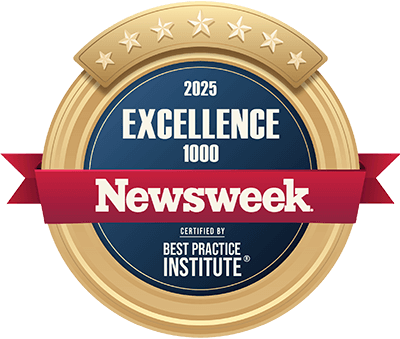Supply Chain Digital Transformation
A Complete Guide
Since 2012, ScienceSoft has been helping midsize and large enterprises digitally transform their supply chains to drive the innovations across their supply chain processes.
Digital Transformation in Supply Chain: Summary
Digital transformation in supply chain helps companies shift to high-performing, resilient, agile, and cost-effective supply chains with the help of powerful digital tools and advanced Supply Chain 4.0 technologies.
|
|
|
|
|
Key project steps: analyzing the current business situation, envisaging the state to-be for the supply chain, designing the digital transformation strategy, project planning, IT infrastructure modernization, upgrading the existing supply chain software, developing new supply chain solutions and integrating them, quality assurance, and user training. Timelines: 15–30 months on average. Cost: $700,000–$5,000,000+, depending on the complexity of a digital supply chain transformation project. Team: a digital transformation consultant, a project manager, a solution architect, a UX/UI designer, a DevOps engineer, a front-end developer, a back-end developer, a data scientist, a QA engineer. |
|
|
|
Having 750+ creative, experienced talents and a full-scale PMO, ScienceSoft is ready to provide all necessary tech and managerial competencies to help companies design and implement effective supply chain digital transformation strategies.
Key Opportunities Digital Transformation in Supply Chain Unlocks
|
|
End-to-end automation of manual tasks, which results in a 2–15x increase in the speed of supply chain processes. |
|
|
AI-guided supply chain optimization, which drives a 25%+ reduction in overall supply chain costs and an up to 20% increase in operating margin. |
|
|
Full visibility into the current and projected supply chain performance, which helps minimize the risk of supply chain disruption and unforeseen costs. |
|
|
Effective collaboration among the internal teams and with external partners, which helps eliminate information silos, accurately plan supply chain operations, and flexibly react to changes. |
|
|
The ability to embrace new, more efficient business models, which brings the potential to establish sustainable relationships with multi-tier suppliers and customers and outperform competitors by 2x in growth, profitability, and operational cost savings. |
A Roadmap to Digital Transformation in Supply Chain
In supply chain digitalization projects, ScienceSoft designs and implements transformation strategies having each client’s unique supply chain processes and needs in mind. Although all digitalization projects have their specifics, they comprise some common steps that form the layout for driving supply chain innovations. Below, we share a sample transformation roadmap to provide you with a general idea on how your project may look.
01
Analyzing the current business situation and envisaging the supply chain state to-be
ScienceSoft starts any supply chain transformation project with an in-depth analysis of the following aspects:
- A client’s overall business picture and business goals.
- Current supply chain processes, KPIs, dependencies with other business processes, operational and economic pains to assess the required depth of digital disruption and prioritize the supply chain areas subject to change.
- The existing supply chain software, its weaknesses and transformation potential.
- IT infrastructure and enterprise software to be integrated with supply chain software, their capabilities and constraints.
- Supply chain data workflows.
- Regulatory requirements and risks, e.g., with the WTO regulations, GDPR (for the EU), ZATCA regulations (for the KSA), HIPAA (for healthcare).
To ensure setting the digital transformation goals in accordance with the customers’ ambitious supply chain plans, ScienceSoft’s consultants conduct interviews with the members of the supply chain teams. Among the questions discussed may be the following:
- What are the long-term and short-term expectations from the transformation? (reduced supply chain costs, faster supply chain processes, minimized supply chain risks, etc.)
- What will be the number of users and user roles (an inventory manager, a purchasing specialist, a supply chain analyst, a supplier, etc.) for the supply chain software?
- Are there any specific requirements for user experience with the new digital solution(s)?
Upon analyzing the collected information and combining the insights obtained from multiple stakeholders into a comprehensive vision, ScienceSoft’s consultants prepare a list of digital transformation requirements, which describes:
- Long-term goals and short-term objectives of digital supply chain transformation, prioritized according to their expected financial impact.
- The supply chain areas that digital transformation should cover.
- All the capabilities that the supply chain innovation should provide.
02
Designing the supply chain digital transformation strategy
Having formed a high-level vision, ScienceSoft proceeds with the conceptualization of digital supply chain transformation. We create an individual action plan, which involves making a range of important technical decisions:
- Outlining the required modifications of the existing IT infrastructure, for example, cloud migration, infrastructure automation, implementation of advanced cybersecurity tools, etc.
- Defining the optimal non-functional requirements (availability, scalability, performance, security, usability, etc.) and a feature set for the supply chain software, including capabilities powered by advanced techs (IoT, AI and ML, computer vision, AR and VR, digital twins, blockchain, etc.).
- Designing the sustainable and scalable architecture for the supply chain ecosystem, its components and integration points.
- Creating a plan of integrations with corporate solutions (e.g., ERP, selling platforms, accounting software), hardware (machine vision cameras, RFID devices, barcode scanners), external services and tools (messaging services, user authentication services, etc.), third-party systems (suppliers’ ERPs, shipping carriers’ systems).
- Designing the UX and UI of supply chain applications for various user roles.
- Selecting a best-fitting tech stack to deliver the transformation.
In most cases, modernization of the existing supply chain software and its evolution with advanced techs offer a faster and more affordable way to innovate the supply chain processes compared to supply chain software development from scratch. Besides, this option goes with significantly reduced user training efforts. We at ScienceSoft thoroughly weigh the benefits and limitations of the software enhancement vs. replacement to define a more economically feasible approach. If legacy solution modification proves to be more cost-effective, we redesign architecture, code, UX/UI of the existing supply chain software, as well as suggest optimal functionality for the solution’s new modules.
03
Project planning
During this stage, ScienceSoft introduces a detailed project plan, including:
- Deliverables.
- Project duration and budget (at the level of the whole project and each particular supply chain digitalization initiative).
- Critical milestones, objectives, and KPIs.
- Project team and collaboration workflows.
- Risks and the ways to mitigate them.
- Expected TCO and ROI of the digital supply chain transformation initiatives.
04
Step-by-step digital transformation of the supply chain
At this stage, ScienceSoft’s team implements the planned digital supply chain transformation initiatives, which may comprise:
- IT infrastructure modernization.
- Implementing IT automation: CI/CD pipelines, container orchestration, cloud automation, etc.
- Supply chain software development and/or modernization and evolution of the existing supply chain solution(s).
- Quality assurance of the supply chain software in parallel with development.
- Integrating supply chain software with relevant internal and third-party systems and running integration testing.
- Implementing advanced supply chain analytics, which may cover the design, training, and tuning of data science models.
- Automated deployment of supply chain software to the production environment.
- Continuous maintenance and support of supply chain software (optional).
Depending on the client’s needs, we can implement digital transformation in collaboration with the client’s or third-party IT teams or take over the entire project and provide knowledge transfer to in-house IT talents.
05
User training
We understand that the success of ambitious transformation initiatives may be stalled due to employees’ reluctance to fully embrace the changes. To make your supply chain team’s transition to new processes as smooth as possible, ScienceSoft experts:
- Conduct the training on the newly-introduced supply chain techs for the employees and external business partners.
- Draw up user training materials and user manuals and provide them to the company’s IT team.
Drive Predictable Digital Transformation in Supply Chain
ScienceSoft relies on decades-long experience in digital transformation projects and 13 years of expertise in supply chain software development to provide:
Why Choose ScienceSoft as a Digital Transformation Partner
- Since 1989 in digital transformation services.
- Since 2012 in designing and building custom supply chain software.
- 150+ testimonials from our valued clients.
- Vast experience in working with large enterprises, including Fortune 500 companies.
- In-house project management office to lead complex digital transformation projects with distributed teams and multiple vendors involved.
- Proficiency in advanced technologies: cloud, IoT, AI and ML, big data, AR and VR, blockchain.
- Practical knowledge of 30+ industries, including manufacturing, healthcare, retail and wholesale, public sector.
- A mature quality management system and customer data security backed up by ISO 9001 and ISO 27001 certifications.
Our awards, certifications, and partnerships
Benefits of the Supply Chain Digital Transformation with ScienceSoft
All-encompassing expert assistance
We can guide you through the whole digital supply chain transformation journey, from strategy creation to the implementation of planned initiatives. We help smoothly adjust the digitalization strategy to the changing needs and are eager to share the knowledge with your in-house or third-party engaged IT team.
ROI-oriented approach
We value our clients’ time and money and continuously find optimization opportunities without compromising quality. We thoroughly analyze the economic feasibility of each proposed transformation initiative to ensure it will bring the expected value. We prioritize the initiatives that offer rapid payoff to help you faster drive the overall ROI from the supply chain innovation.
Close and transparent collaboration
We closely collaborate with the project stakeholders from your side to get an in-depth understanding of your supply chain needs and tailor our services accordingly. We define custom sets of KPIs to track the quality of services we deliver and submit regular reports on the accomplished tasks.
Boosting business value with advanced techs
Having proven expertise in cloud, AI and ML, big data, IoT, AR and VR, blockchain, we help select and implement the advanced technologies that best meet your digital transformation needs.
Typical Roles on ScienceSoft’s Supply Chain Digitalization Teams
Business Analyst / Digital Transformation Consultant
- Analyzing the as-is business situation.
- Setting up and prioritizing digital transformation goals.
- Creating a strategy of digital supply chain transformation.
Project Manager
- Planning the digital transformation project (deliverables, schedule, budget).
- Coordinating the project team(s).
MORE RESPONSIBILITIES
Solution Architect
- Designing the architecture of supply chain software, including integration points with the required systems.
- (in case of modernization) Redesigning the architecture of the existing supply chain solution(s).
UX/UI Designer
- Designing the UX and UI of supply chain applications for various user roles.
DevOps Engineer
- Configuring the IT automation environment for facilitated development, testing, integration, and deployment of supply chain software.
Front-end Developer
- Delivering the UI of supply chain software.
- Fixing the defects reported by QA engineers.
Back-end Developer
- Coding the back end of supply chain software.
MORE RESPONSIBILITIES
Data Scientist
- Designing the supply chain analytics models powered with ML algorithms.
QA Engineer
- Designing and implementing a test strategy, a test plan, and test cases for the supply chain software.
MORE RESPONSIBILITIES
|
|
|
|
|
NB! Depending on the specifics of the digital supply chain transformation project, ScienceSoft can involve additional talents, for example, blockchain developers to build blockchain-based supply chain software. |
|
|
|
Sourcing Models for Digital Transformation of Supply Chain
Advanced Technologies to Digitally Transform the Supply Chain
ScienceSoft applies the best-fitting innovative techs for each particular digital transformation case to drive a high ROI across the supply chain processes.
Cloud computing
Robotic process automation
Internet of Things
Machine & deep learning
Artificial intelligence & data science
Computer vision & natural language processing
Digital twins
Blockchain
Augmented & virtual reality
Cost Factors of Digital Transformation in Supply Chain
|
|
|
|
|
From ScienceSoft’s experience, the supply chain digital transformation project for an upper midsize company may cost around $700,000–$5,000,000. Large enterprises with multiple branches and complex international supply chains should expect to invest $5,000,000+. |
|
|
|
Each digital supply chain transformation case is unique, so the cost factors vary for different customers. Below, we outline major cost factors for you to get a general idea of what may affect the supply chain innovation budget and duration.
- The number and specifics of supply chain processes (e.g., supply chain planning, inventory management, procurement management, logistics management) subject to transformation.
- The possibility to reuse existing supply chain software and IT infrastructure components.
- Functional complexity of new software, including the implementation of the features powered with advanced techs.
- Performance, availability, scalability, security requirements.
- The number and complexity of supply chain software integrations with the required internal and third-party systems.
- The number of user roles to interact with the supply chain software landscape.
- The required complexity of supply chain analytics.
- Compliance requirements.
- The chosen sourcing model.
About ScienceSoft
ScienceSoft is a global IT consulting and software development company headquartered in McKinney, Texas. We provide end-to-end digital transformation services to help enterprises drive improvements across their supply chain processes with the help of robust digital tools and cutting-edge technologies. In our digital transformation projects, we employ mature quality management and data security management systems backed by ISO 9001 and ISO 27001 certifications.




